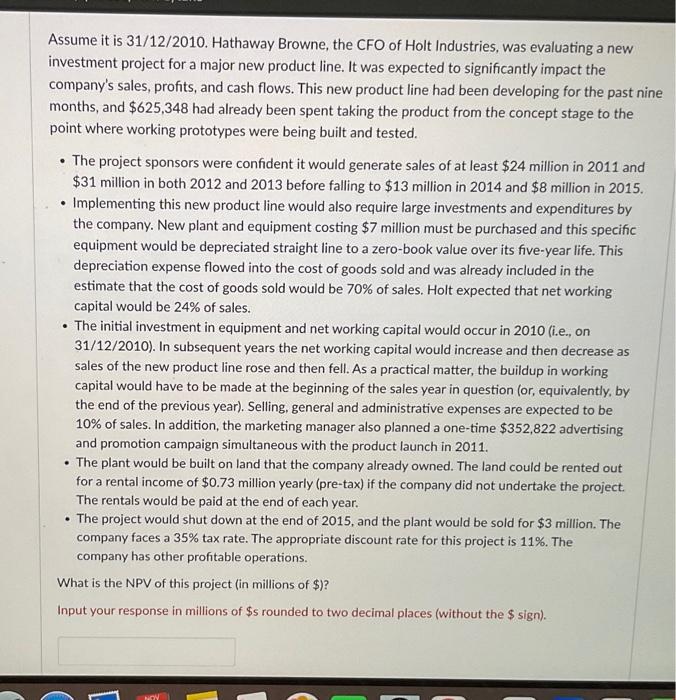Assume it is 31/12/2010. Hathaway Browne, the CFO of Holt Industries, was evaluating a new investment project for a major new product line. It was expected to significantly impact the company's sales, profits, and cash flows. This new product line had been developing for the past nin months, and $625,348 had already been spent taking the product from the concept stage to the point where working prototypes were being built and tested. - The project sponsors were confident it would generate sales of at least $24 million in 2011 and $31 million in both 2012 and 2013 before falling to $13 million in 2014 and $8 million in 2015. - Implementing this new product line would also require large investments and expenditures by the company. New plant and equipment costing $7 million must be purchased and this specific equipment would be depreciated straight line to a zero-book value over its five-year life. This depreciation expense flowed into the cost of goods sold and was already included in the estimate that the cost of goods sold would be 70% of sales. Holt expected that net working capital would be 24% of sales. - The initial investment in equipment and net working capital would occur in 2010 (i.e., on 31/12/2010). In subsequent years the net working capital would increase and then decrease as sales of the new product line rose and then fell. As a practical matter, the buildup in working capital would have to be made at the beginning of the sales year in question (or, equivalently, by the end of the previous year). Selling, general and administrative expenses are expected to be 10% of sales. In addition, the marketing manager also planned a one-time $352,822 advertising and promotion campaign simultaneous with the product launch in 2011. - The plant would be built on land that the company already owned. The land could be rented out for a rental income of $0.73 million yearly (pre-tax) if the company did not undertake the project. The rentals would be paid at the end of each year. - The project would shut down at the end of 2015 , and the plant would be sold for $3 million. The company faces a 35% tax rate. The appropriate discount rate for this project is 11%. The company has other profitable operations. What is the NPV of this project (in millions of \$)? Input your response in millions of $ s rounded to two decimal places (without the $ sign)







